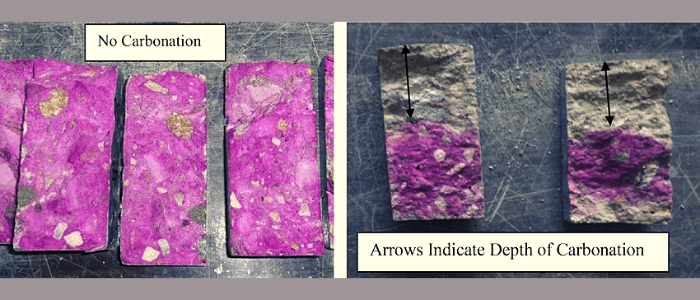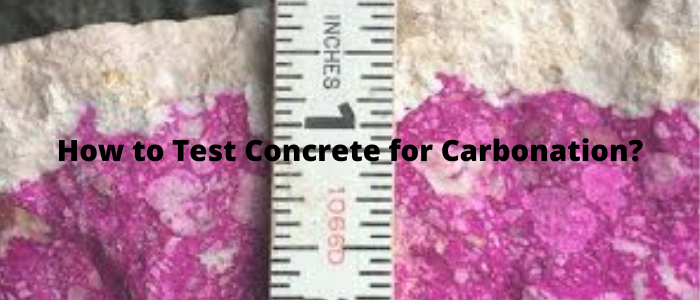You do not have to be a concrete guru to understand “carbonation“. This article simply explains the process of carbonation and shows how easily it is for home owners to know the effect of carbon dioxide in the air on their concrete houses. We usually test for carbonation when there are signs of reinforcement corrosion in the building for example rust stains, popping out of concrete at locations of steel bars, or cracking of concrete in the longitudinal direction of steel bars.
So, What does carbonation do?
Let’s begins with saying that concrete is an alkaline material which has a pH (you know that from high school chemistry right? 😉) of 12 – 13. This high pH causes a very thin film around steel bars (called passive film) that protects it from corrosion. Looking at the other side, we see carbon dioxide as an acidic material. So, when CO2 from the air reacts with the concrete of your house, it simply decreases the alkalinity of concrete.
and what happens next?
Yup, you guessed right. Steel starts to corrode when the pH of concrete around steel bars decreases to below 9.5
Why is corrosion so annoying to us?
For many reasons actually. let us not talk about the aesthetic reasons. Corrosion forms rust around the bars. The problem with rust is that it is expansive which means you have a material inside concrete that wants to expand and fill a bigger volume than that is allowed for it. This causes cracking of concrete around the bars and in severe cases, concrete may fall.
How to know whether your concrete is carbonated or not?
Simple, simple, simple. use PHENOLPHTHALEIN. It has a very interesting feature. Its color changes depending on the pH. So, to find the carbonation depth, cut a part of concrete, spray it with 0.2% solution of phenolphthalein. The carbonated part will have no color and the not-carbonated part will be magenta in color.

This test is very simple, yet, it provides a nice idea on the condition of concrete in field.
